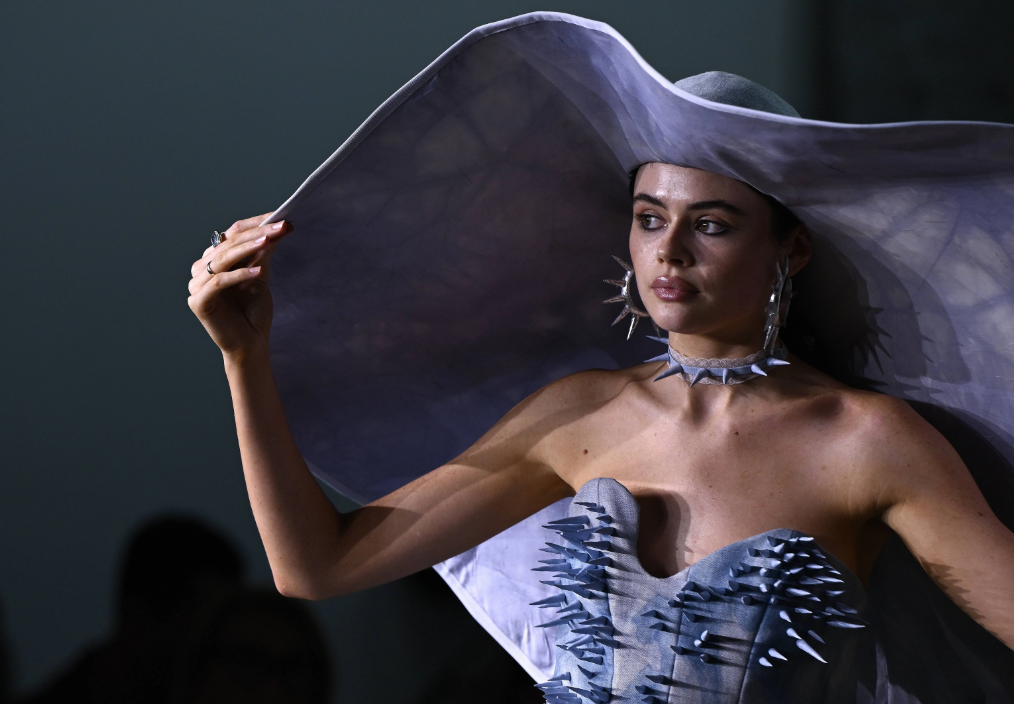
Street style and runway looks are clearly in harmony this season, and both have brought back the Hawaiian shirt to lead the menswear.
It's been a long time since tropical brands like Quiksilver have been so popular that we've seen such a wave of fashion inspired by clothing featuring bold, natural prints.
For a while, it had been relegated to the hangers of vintage clothing stores, relegated to the shelf for its slightly comical dressing effect, or firmly framed in the memories of yellowed vacation photos. But now, everything has changed.
Louis Vuitton's Kim Jones presented lush foliage;
Demna Gvasalia of Balenciaga brought the fiery desert;
DSquared2 holds out hibiscus flowers, of course, without rivets, leopard print and other elements; Dries VanNoten offered a more subdued version;
MSGM's work works well with California surfers;
Salvatore Ferragamo chose elements with a Mediterranean feel;
Paul Smith combines carp and coral for a decorative effect.
And that doesn't even take into account the show-goers themselves, who have been won over by the shirt's charm.
The Hawaiian shirt sits roughly in the middle of the menswear lineup, with streetwear at one end and sophistication at the other.
It is easy to wear and has both chic and casual charm and gorgeous sophistication.
Of course, the Hawaiian shirt had a history of its own long before it was revived with its spring/summer 2018 fashion shows and the kind of street-style photos that are now filling Instagram feeds.
- It is widely believed that the origins of this shirt owner can be traced back to the 1930s and the rise of tourism in Hawaii, which did not become a US state until 1959.
Shirts made from locally produced tapa or bark cloth, small tailors began to print their local shirts, commonly called Palaka, to meet the demand of this new influx of customers. Hawaiians also wear these shirts on special occasions.
-
Ellery Chun, a Honolulu-based Yale economics graduate, is credited with being the first person to mass-produce the Hawaiian shirt and is the mastermind behind the name.
-
A shirt-maker named Musa-Shiya Shoten placed an advertisement in a 1935 issue of The Honolulu Advertiser for Aloha shirts, which it said were "well cut, beautifully designed, and brightly colored." Presumably inspired by the trend, Chun immediately seized on the idea and registered the Aloha trademark in 1936.
-
Prints on Hawaiian shirts are often a mix of exotic flowers, plants, and ocean landscapes, blending influences from Tahiti, Japanese, and Filipino cultures. It's sometimes considered a little too fancy to escape the cheap knockoffs that tourists associate with it, but higher up the fashion food chain, the expensive pieces take on significance through their use of color and expressive design as a nod to Hawaiian heritage.
-
In 1950, Aloha clothing manufacturer AlfredShaheen in Hawaii began employing artists to design prints on his fabrics, which avoided overly gauntlet colors and stale designs. They were so successful that one of his designs, worn by Elvis Presley on the cover of Blue Hawaii in 1961, now reportedly sells for tens of thousands of dollars at auction.
-
The Hawaiian shirt is popular among surfers and beach boys, and has gradually become a symbol of casual holiday wear, a casual fashion style popular with men.
In 1951, President Truman appeared on the cover of Life magazine wearing a Hawaiian shirt, while President Nixon posed in a Hawaiian shirt in 1960.
-
By the 1980s, their appeal began to wane. But while fashion has abandoned them, movies and screens have not. There are countless posters of movie stars wearing Hawaiian shirts: Tom Selleck of "Detective", which ran from 1980 to 1988; Al Pacino in Scarface; Tom Cruise in "Cocktail"; Christian Slater in True Romance; Brad Pitt from Fight Club; Johnny Depp and Benicio Del Toro in Fear and Loathing in Las Vegas; Leonardo DiCaprio in Romeo and Juliet, and even Jim Carrey wore one in Detective's Head. Interestingly, in the film, the shirt represents a sense of rebellion, redemption, escape, and debauchery to the character who wears it.
-
At the turn of the century, the style briefly returned to the spotlight, with brands such as Quiksilver and Billabong that marketed surfing, skateboarding and skiing gaining popularity.
Since then, little has happened to Hawaiian shirts. Until now.
As men's wear began to abandon street style and sportswear, designers from Milan to Paris found inspiration in this colorful shirt, and with Hawaiian shirts prominent on the spring/summer 2018 shows, the outdated image previously associated with tacky tourists is long gone.

